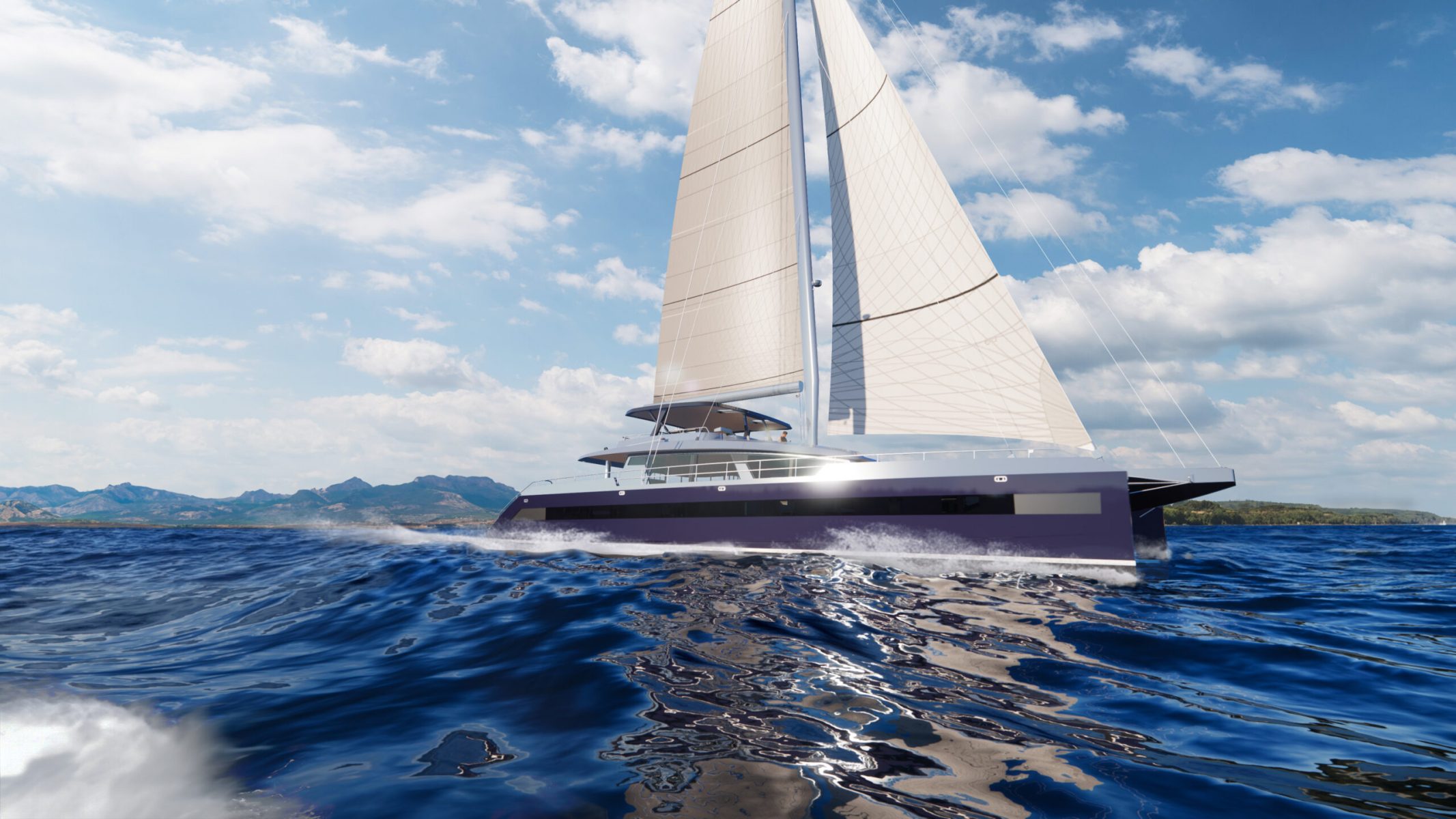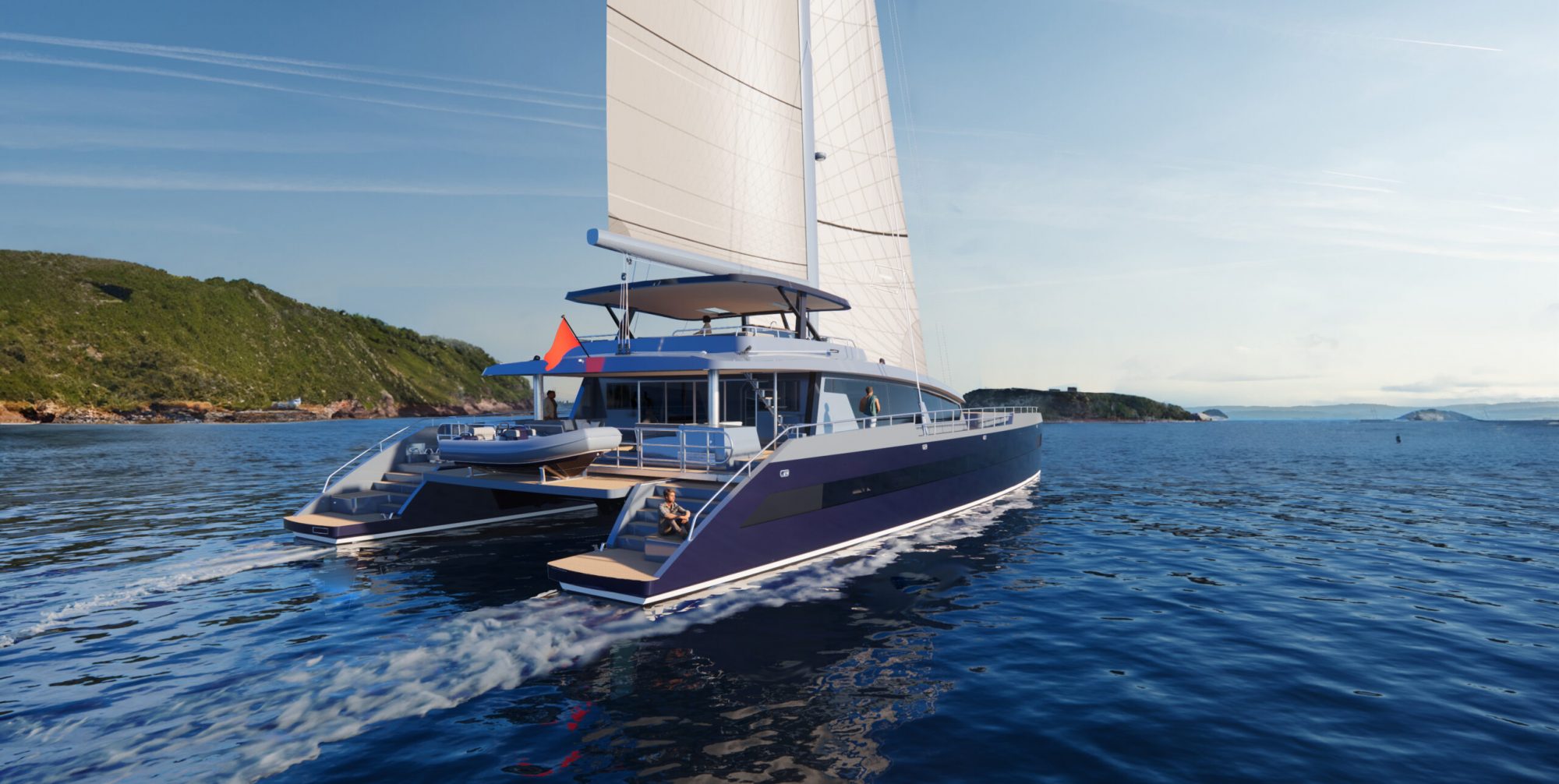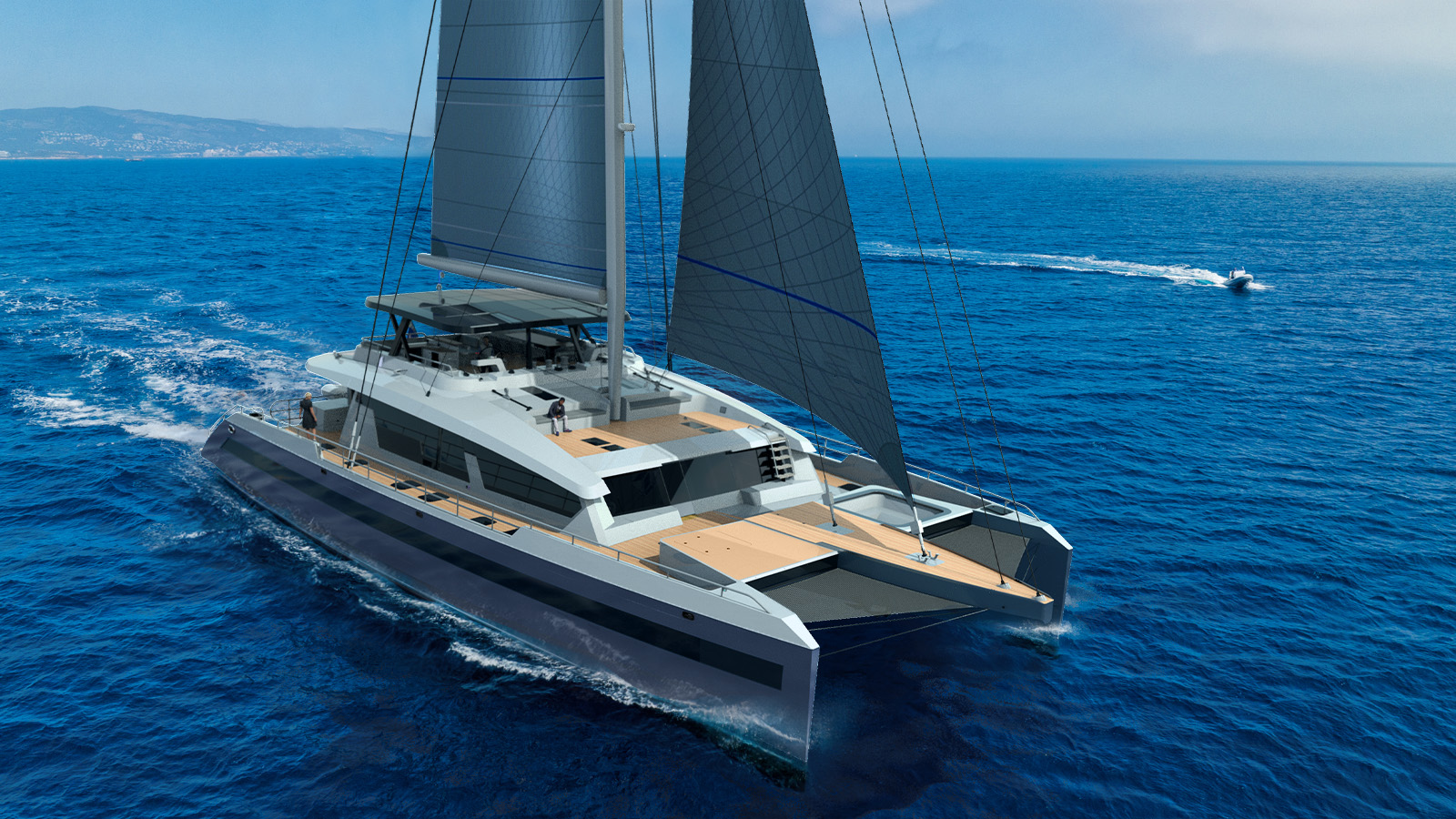

Catamaran design
What are the main advantages of a catamaran, and what should be considered when designing one?
What are the main advantages of a catamaran, and what factors should be considered when designing one?
Twenty years ago, catamarans were still exotic, they were pretty rare to find, but today they have become an integral part of coastal marinas. What makes them so popular? Why not a trimaran, and what do shipyards and buyers alike have to look out for?
There are several reasons for this success, and as with any boat, none of them stands alone. Looking at the design, shipyards have adapted to the design of modern motor and sailing yachts with ever-larger superstructures. While catamarans of the 1980s were built with flat decks and required crawling down, today the living areas on deck are real space wonders. Thanks to large windows, the cabins in the hulls are bright and welcoming. A striking feature of the layout is that port and starboard can be functionally separated, meaning improved privacy and the possibility to create areas for different uses for both the owner and their guests. This gives shipyards more layout options without requiring significant structural changes to the shape or exterior areas.
The advantages extend to the deck and flybridge, as more space translates to more comfort. Even a 12-meter catamaran, which typically defines the entry-level class today, offers a cockpit found only on significantly larger motor yachts. Dinghies and other water toys are much easier to store, and crew and guests have plenty of places to retreat for eating, sunbathing, or finding shelter from the wind and weather.
Less adventurous water sports enthusiasts prone to seasickness will also find more comfort on a multihull, which has hardly any leaning angle—a feature that increases the feeling of safety for the crew.
The increased space and comfort also make catamarans perfect for charter, further boosting their popularity. Through charter, a wider crowd can experience and become familiar with new boats, which often marks the first step toward ownership.
The rise of catamarans is a clearly identified trend, as many monohull shipyards, both in the upper end and entry level, ranging from Perini Navi, Sanlorenzo/Bluegame, Isa Yachts, and Jeanneau, are venturing into this market.
Another trend propelling them is sustainability and green propulsion systems. Many new yards focusing on sustainability opt for developing catamarans due to their large surface area suitable for solar panels and additional hull space in which is possible to host batteries and innovative alternative propulsion solutions.
Like all boats, catamarans are sensitive to weight. The devil is in the invisible details.
Additional functions or comfort features add more weight compared to a monohull because the volumes and surfaces are larger. For instance, installing an air conditioning system demands more power. Consequently, a larger generator is necessary, leading to the need for more diesel on board. It’s essential to consider that expanding living space and adding more berths not only enhance comfort but also increase the payload capacity, enabling accommodation for more people on board, which add to the boat’s overall weight.
Specifically, a multihull offers more living and usable space per kilogram of boat weight. In other words, with a comparable offer, you have to push less weight through the water, so you subjectively sail with smaller engines and need less fuel.
Physics plays its part; the slender hulls help. The wave resistance increases from a certain Froude number until the so-called hull speed is reached. The valley of the bow wave meets the stern wave so that they roughly neutralize each other. If the ratio of length to width is very high, greater than 8, as on a catamaran, then wave formation is minimized, and water resistance increases less than with wide hulls. This characteristic is probably the origin of the famous statement ‘length runs.’
Some of the sailing catamarans are also available as pure motor yachts, but upon closer inspection, they are mostly built on the sailing sister ships. They often share the same hull shape, and have only minor changes on deck that convert them into a powercat. The first new developments, designed by shipyards from the outset as motor yachts, are entering the market in recent years.
Relying on a more powerful propulsion system, powercats can reach higher speeds, and the hull line must be adapted accordingly. Additionally, the available spaces can be utilized in various ways, allowing for optimization according to specific needs and preferences.
Trimarans remain a niche occupied either by smaller boats with retractable side floats (without accommodation) or a few superyachts with an unusual design. Only the latter are sufficiently large for the two outer hulls to serve a practical purpose. Trimarans will continue to be built for special purposes and will only find their enthusiasts in this way.
There is no advantage without a disadvantage: moorings are more expensive, inland areas are often off-limits, and many harbor operations are unable to crane catamarans due to their width.
You should be aware of these facts when choosing the right catamaran or even when building one. Only at second glance do the difficulties become apparent. Lots of space on board makes for a larger payload, more weight, and also more costs.
Without a doubt, in the end, you get more space, you have a shallower draft, but at the same time, you have to take the greater width into account, whether for the berth or when choosing a cruising area.
Originally written for and published in BOOTE magazine


